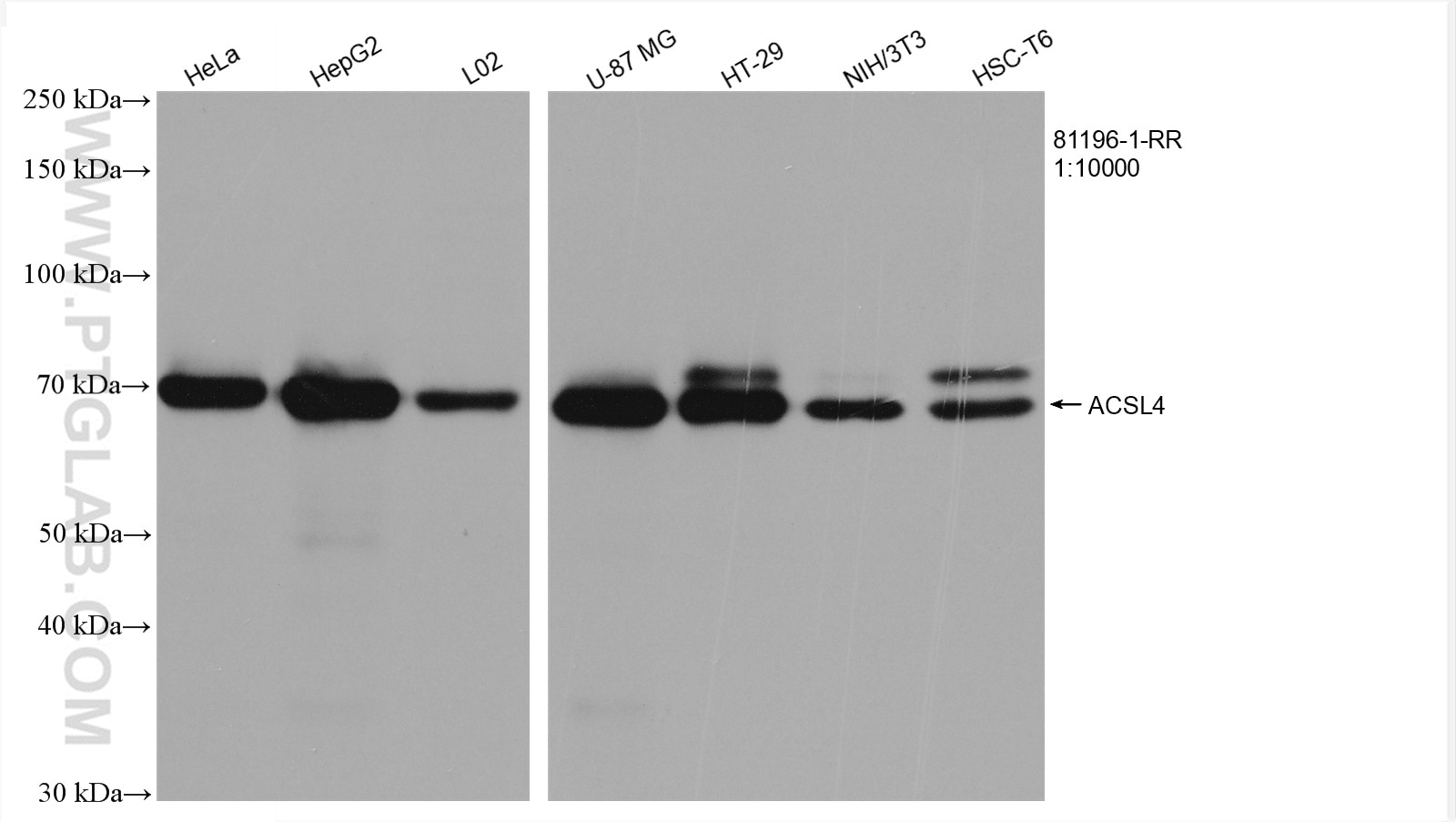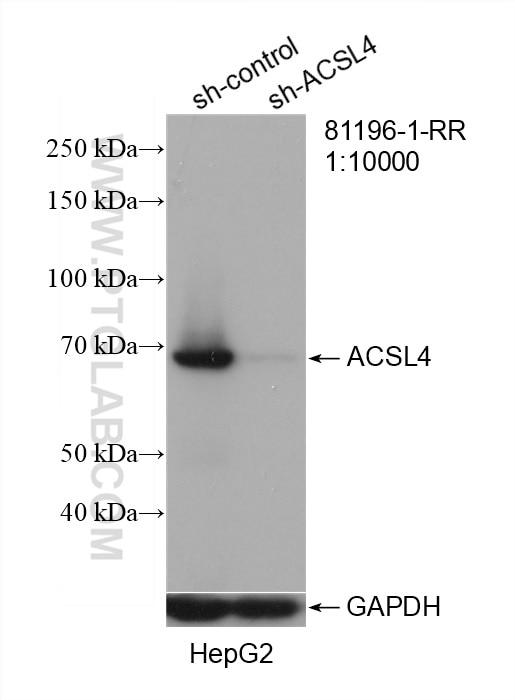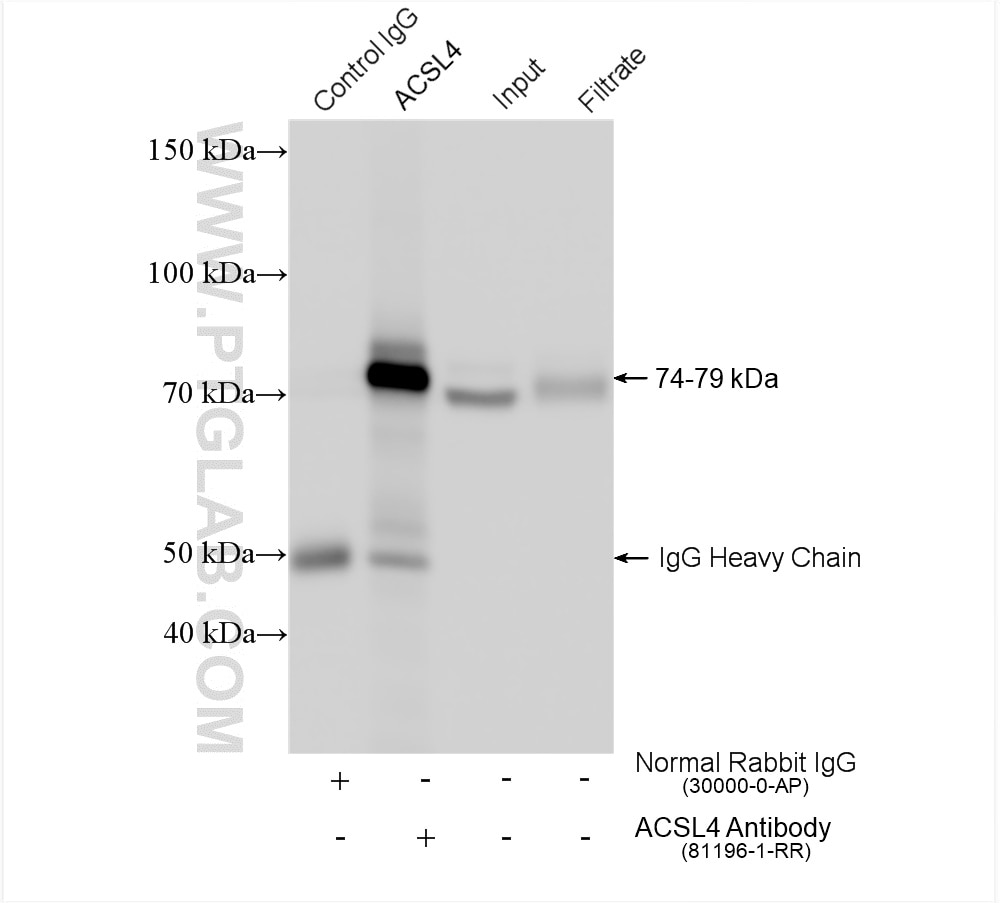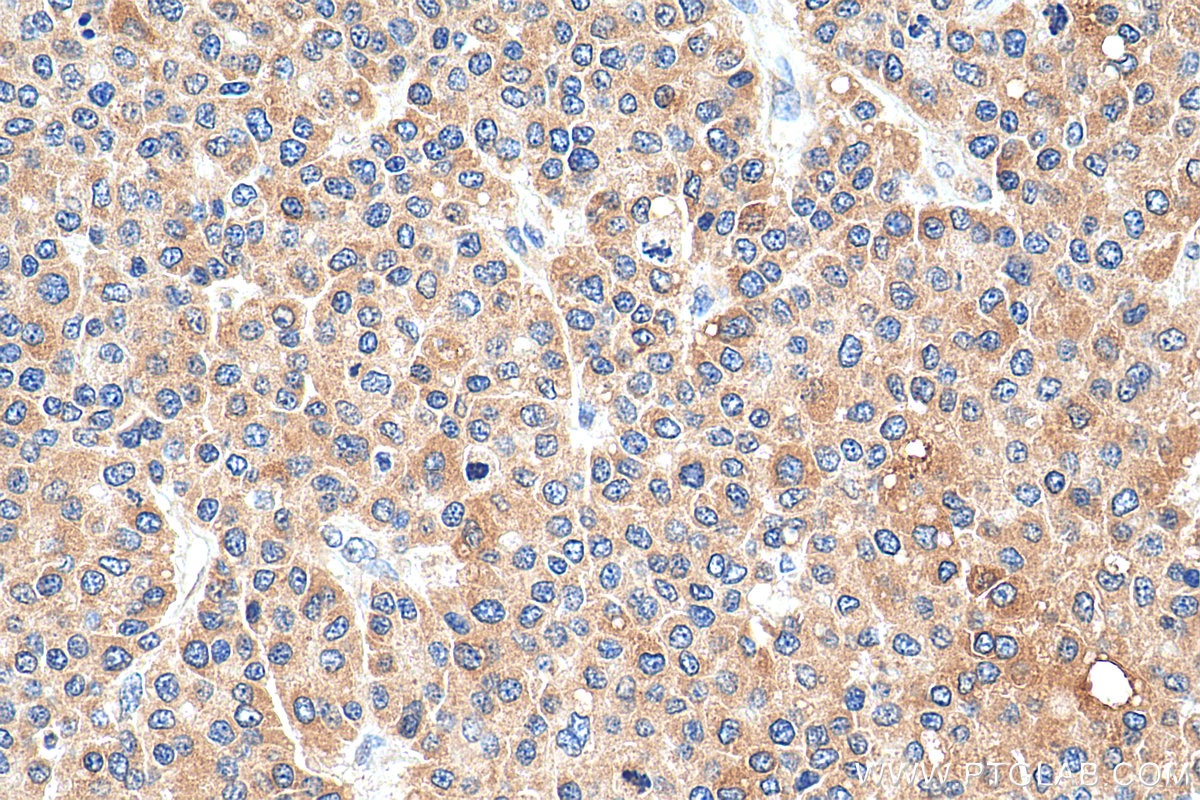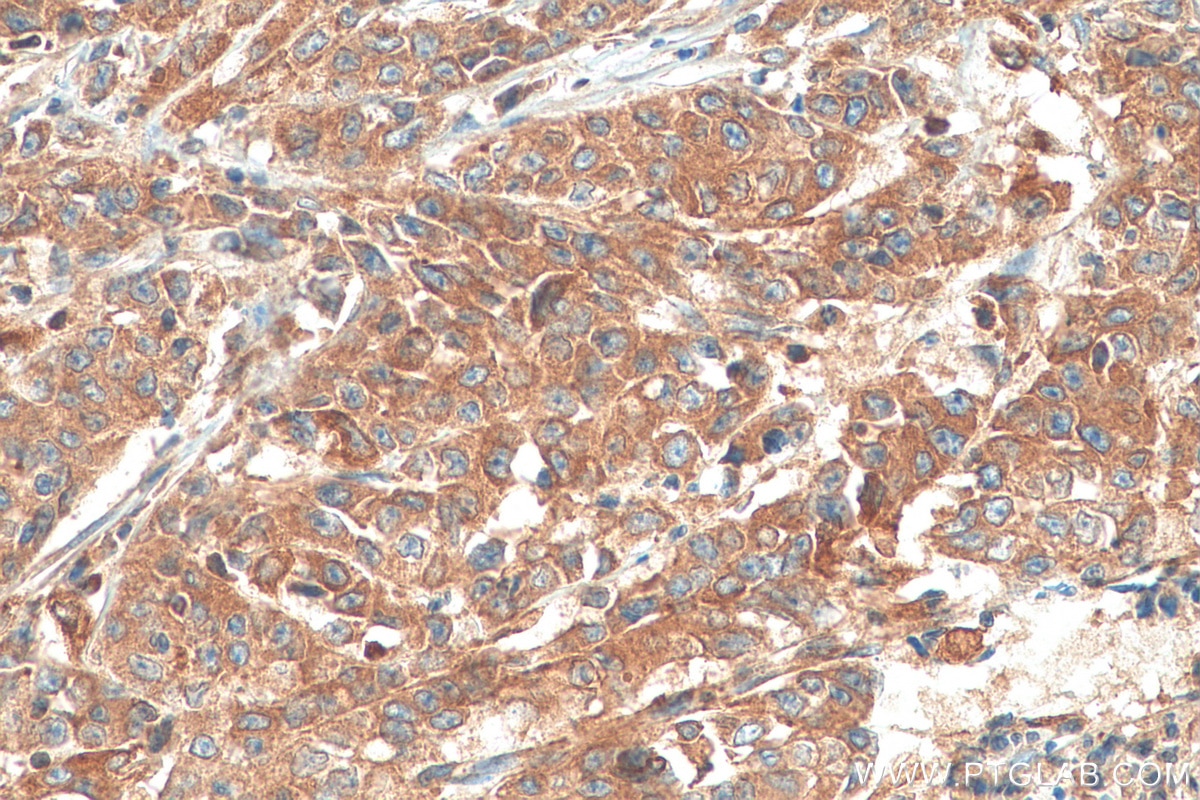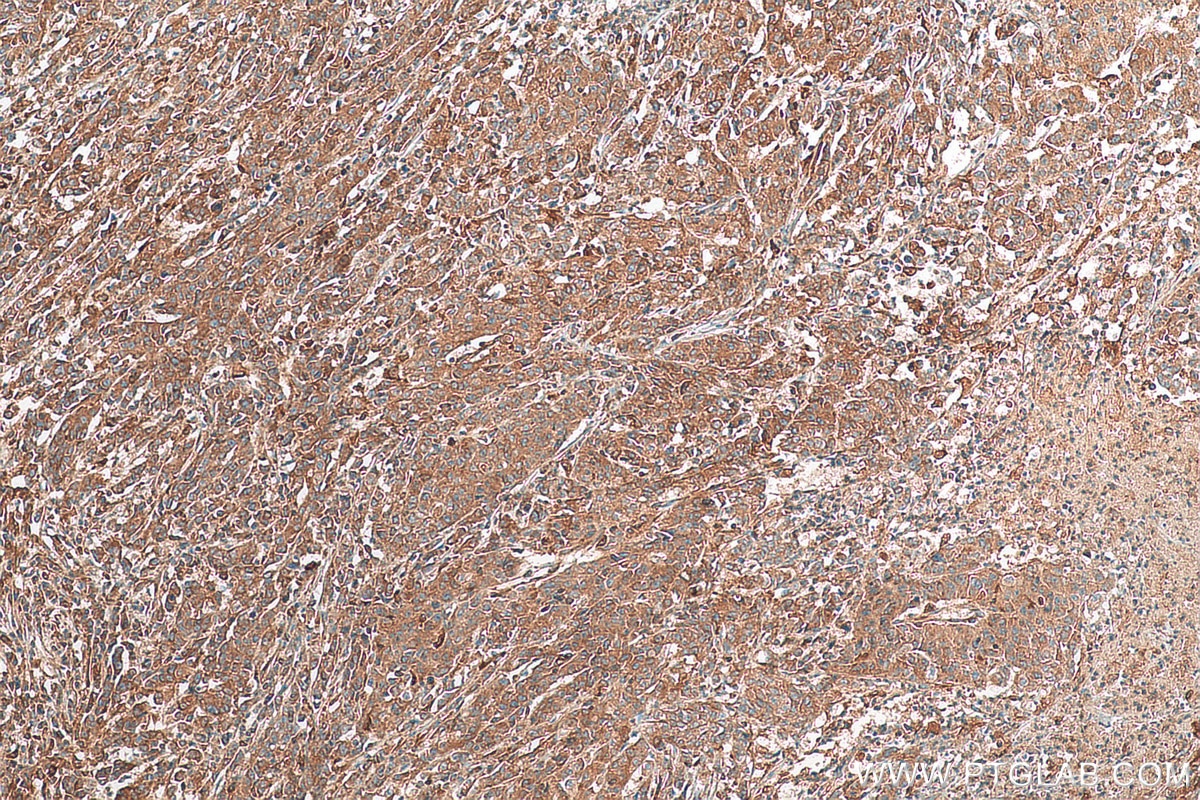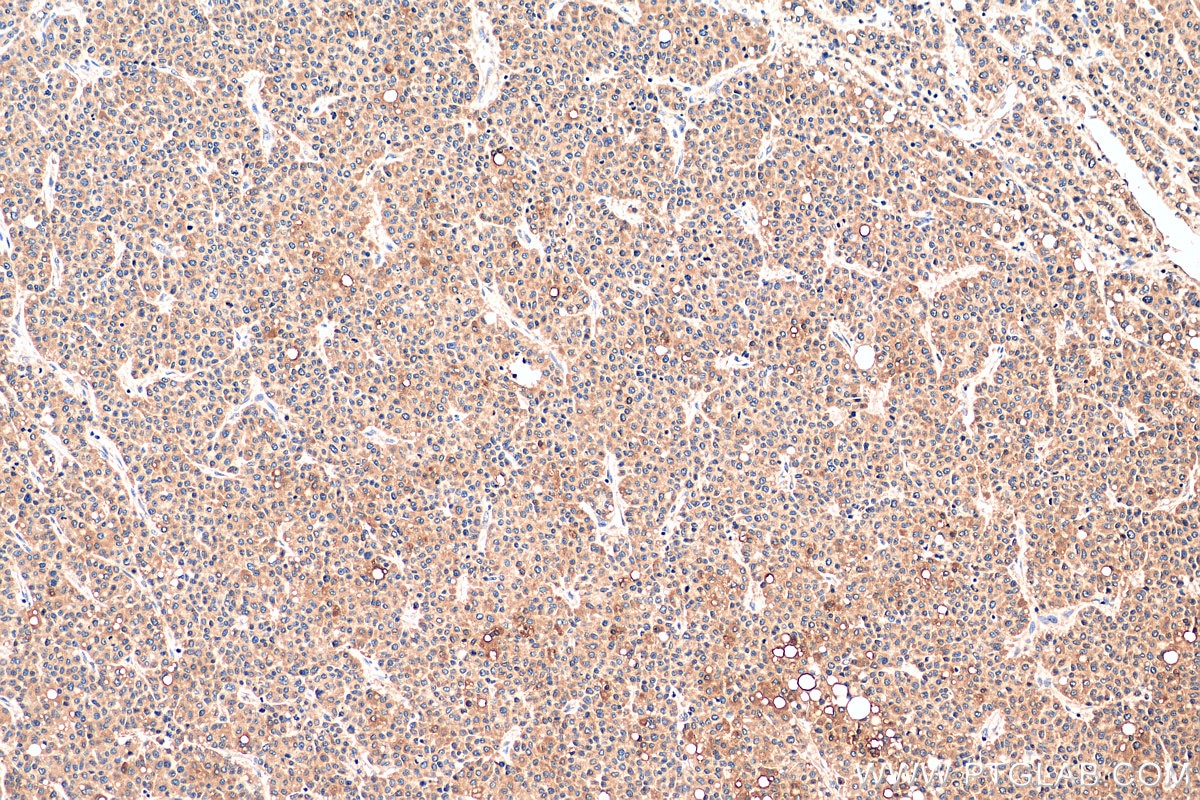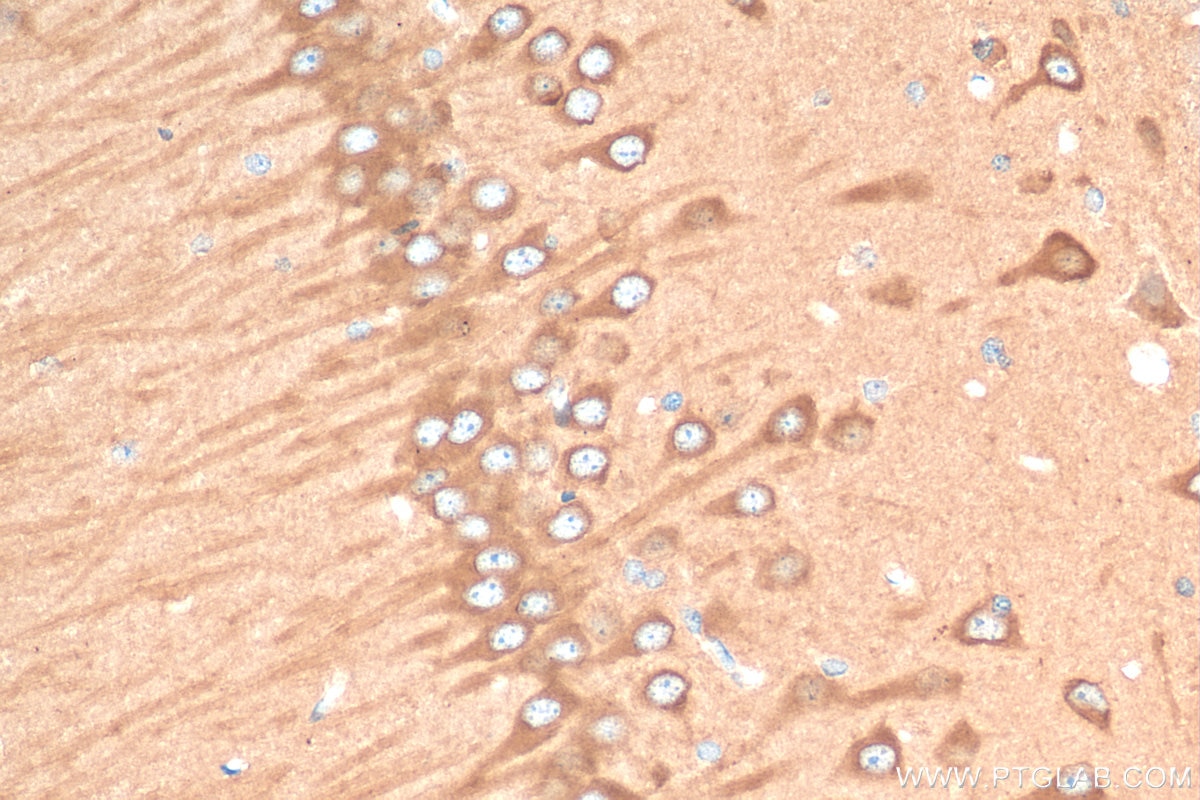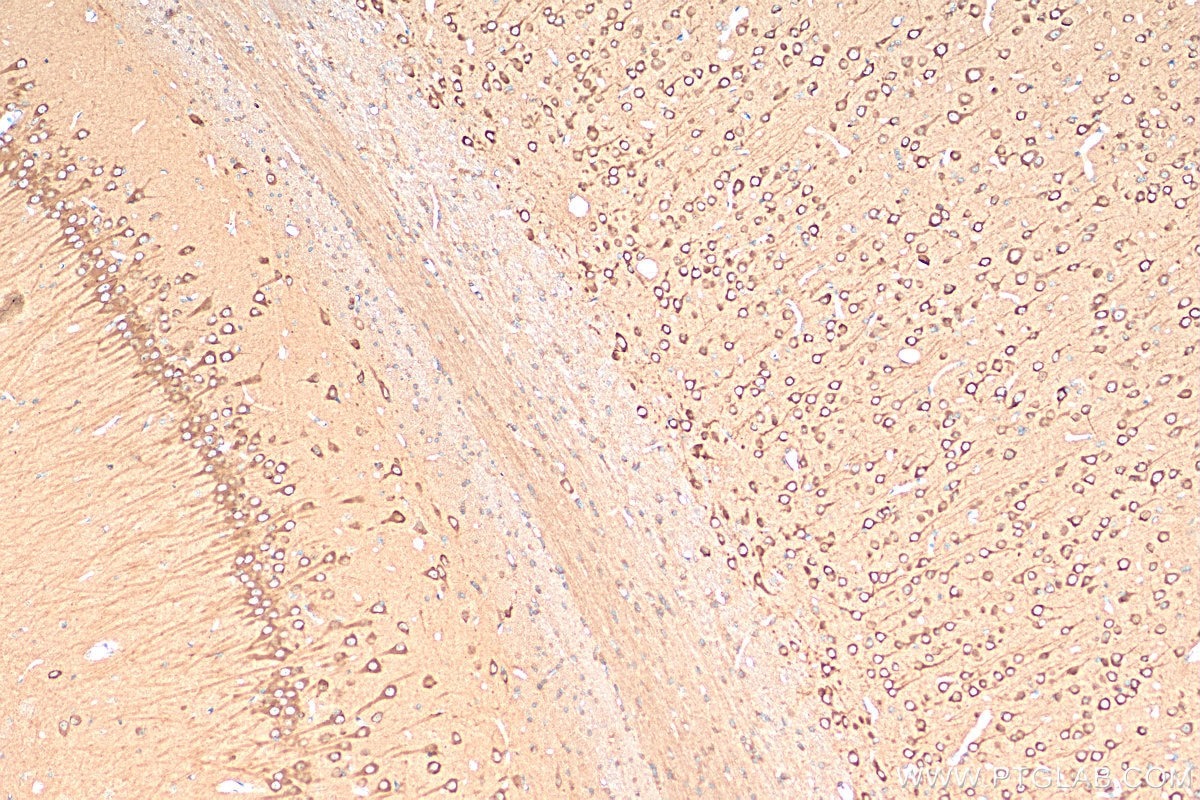- Phare
- Validé par KD/KO
Anticorps Recombinant de lapin anti-ACSL4/FACL4
ACSL4/FACL4 Recombinant Antibody for WB, IHC, IP, ELISA
Hôte / Isotype
Lapin / IgG
Réactivité testée
Humain, rat, souris
Applications
WB, IHC, IP, ELISA
Conjugaison
Non conjugué
CloneNo.
3I9
N° de cat : 81196-1-RR
Synonymes
Galerie de données de validation
Applications testées
| Résultats positifs en WB | cellules HeLa, cellules HepG2, cellules HSC-T6, cellules HT-29, cellules L02, cellules MG U-87, cellules NIH/3T3 |
| Résultats positifs en IP | cellules HeLa, |
| Résultats positifs en IHC | tissu de cancer du foie humain, tissu cérébral de rat, tissu de cancer de l'estomac humain il est suggéré de démasquer l'antigène avec un tampon de TE buffer pH 9.0; (*) À défaut, 'le démasquage de l'antigène peut être 'effectué avec un tampon citrate pH 6,0. |
Dilution recommandée
| Application | Dilution |
|---|---|
| Western Blot (WB) | WB : 1:5000-1:50000 |
| Immunoprécipitation (IP) | IP : 0.5-4.0 ug for 1.0-3.0 mg of total protein lysate |
| Immunohistochimie (IHC) | IHC : 1:50-1:500 |
| It is recommended that this reagent should be titrated in each testing system to obtain optimal results. | |
| Sample-dependent, check data in validation data gallery | |
Applications publiées
| WB | See 6 publications below |
| IHC | See 1 publications below |
Informations sur le produit
81196-1-RR cible ACSL4/FACL4 dans les applications de WB, IHC, IP, ELISA et montre une réactivité avec des échantillons Humain, rat, souris
| Réactivité | Humain, rat, souris |
| Réactivité citée | rat, Humain, souris |
| Hôte / Isotype | Lapin / IgG |
| Clonalité | Recombinant |
| Type | Anticorps |
| Immunogène | ACSL4/FACL4 Protéine recombinante Ag18085 |
| Nom complet | acyl-CoA synthetase long-chain family member 4 |
| Masse moléculaire calculée | 711 aa, 79 kDa |
| Poids moléculaire observé | 70 kDa, 75 kDa |
| Numéro d’acquisition GenBank | BC034959 |
| Symbole du gène | ACSL4 |
| Identification du gène (NCBI) | 2182 |
| Conjugaison | Non conjugué |
| Forme | Liquide |
| Méthode de purification | Purification par protéine A |
| Tampon de stockage | PBS with 0.02% sodium azide and 50% glycerol |
| Conditions de stockage | Stocker à -20°C. Stable pendant un an après l'expédition. L'aliquotage n'est pas nécessaire pour le stockage à -20oC Les 20ul contiennent 0,1% de BSA. |
Informations générales
Acyl-CoA synthetase long-chain family member 4 (Acsl4), an important enzyme involved in lipid metabolism, participates in ferroptosis by converting free AA into arachidonoyl-CoA to generate lipid hydroperoxides. Recent studies revealed that ACSL4 is involved in biological responses including inflammation, steroidogenesis, cell death, female fertility, and cancer. Acsl4 has two isoforms: 79 kDa and 75 kDa. ACSL4 also can be detected in 70 kDa(PMID:35326233).
Protocole
| Product Specific Protocols | |
|---|---|
| WB protocol for ACSL4/FACL4 antibody 81196-1-RR | Download protocol |
| IHC protocol for ACSL4/FACL4 antibody 81196-1-RR | Download protocol |
| IP protocol for ACSL4/FACL4 antibody 81196-1-RR | Download protocol |
| Standard Protocols | |
|---|---|
| Click here to view our Standard Protocols |
Publications
| Species | Application | Title |
|---|---|---|
Front Pharmacol Epigallocatechin gallate alleviates high-fat diet-induced hepatic lipotoxicity by targeting mitochondrial ROS-mediated ferroptosis | ||
Nanomedicine (Lond) Mesoporous zinc-polyphenol nanozyme for attenuating renal ischemia-reperfusion injury | ||
BMC Cancer Oridonin-induced ferroptosis and apoptosis: a dual approach to suppress the growth of osteosarcoma cells | ||
Eur J Pharm Sci Pharmacodynamic Insights into Maresin 1: Enhancing Flap Viability via the Keap1/Nrf2 Axis to Control ROS-Driven Apoptosis and Ferroptosis | ||
Viruses Infectious Spleen and Kidney Necrosis Virus Triggers Ferroptosis in CPB Cells to Enhance Virus Replication | ||
MedComm (2020) Novel aspect of neprilysin in kidney fibrosis via ACSL4-mediated ferroptosis of tubular epithelial cells |
